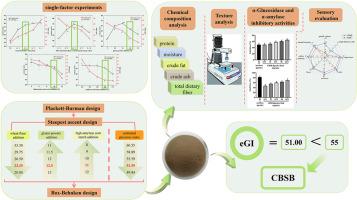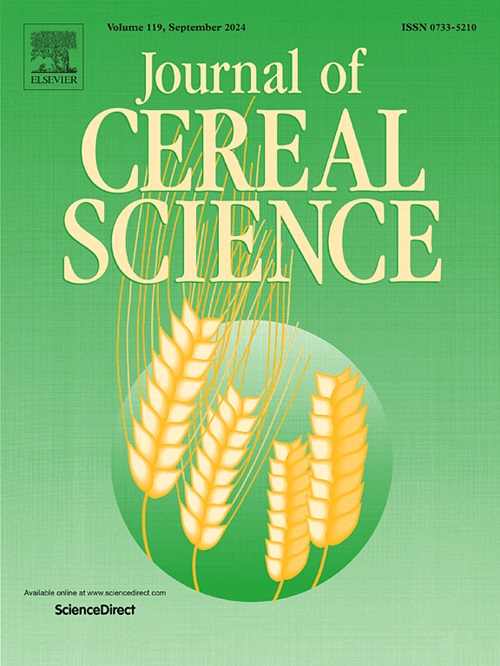低GI复合荞麦馒头的研制及品质分析
IF 3.7
2区 农林科学
Q2 FOOD SCIENCE & TECHNOLOGY
引用次数: 0
摘要
研究了低血糖指数(GI)复合荞麦馒头(CBSB)的研制及质量分析。通过系统实验对CBSB配方进行优化,得出以23.8%小麦粉、16.9%苦荞麦粉、59.3%甜荞麦四型粉为基础,添加12.1%谷蛋白粉、11.7%高直链玉米淀粉、0.8%桑叶提取物的最佳配方。该配方导致CBSB的感官评分为63.8,血糖指数(eGI)估计值为51.00。进一步的质量分析表明,CBSB具有独特的香气和丰富的营养成分,如膳食纤维、脂肪和蛋白质。此外,CBSB对α-葡萄糖苷酶(抑制率为48.91 ~ 64.87%)和α-淀粉酶(抑制率为46.77 ~ 69.76%)具有显著的体外抑制活性,在糖尿病患者和有特殊饮食需求的人群的饮食管理中具有潜在的应用价值。本研究为低GI功能性主食的开发提供了基础。本文章由计算机程序翻译,如有差异,请以英文原文为准。

Development and quality analysis of low GI composite buckwheat steamed bun
This study investigated the development and quality analysis of low glycemic index (GI) composite buckwheat steamed bun (CBSB). The CBSB formulation was optimized through systematic experiments, revealing an optimal composition of 23.8 % wheat flour, 16.9 % bitter buckwheat flour, and 59.3 % sweet buckwheat type 4 flour as the base, supplemented with 12.1 % gluten powder, 11.7 % high-amylose corn starch, and 0.8 % mulberry leaf extract. This formulation resulted in a sensory score of 63.8 for CBSB and an estimated glycemic index (eGI) value of 51.00. Further quality analysis indicated that CBSB possessed a distinctive aroma and abundant nutritional components such as dietary fiber, fat, and protein. Additionally, CBSB exhibited notable in vitro inhibitory activities against α-glucosidase (48.91–64.87 % inhibition rate) and α-amylase (46.77–69.76 % inhibition rate), highlighting its potential utility in the dietary management of diabetic patients and individuals with special dietary needs. Overall, this study provided a foundation for the development of low GI functional staple foods.
求助全文
通过发布文献求助,成功后即可免费获取论文全文。
去求助
来源期刊

Journal of Cereal Science
工程技术-食品科技
CiteScore
7.80
自引率
2.60%
发文量
163
审稿时长
38 days
期刊介绍:
The Journal of Cereal Science was established in 1983 to provide an International forum for the publication of original research papers of high standing covering all aspects of cereal science related to the functional and nutritional quality of cereal grains (true cereals - members of the Poaceae family and starchy pseudocereals - members of the Amaranthaceae, Chenopodiaceae and Polygonaceae families) and their products, in relation to the cereals used. The journal also publishes concise and critical review articles appraising the status and future directions of specific areas of cereal science and short communications that present news of important advances in research. The journal aims at topicality and at providing comprehensive coverage of progress in the field.
 求助内容:
求助内容: 应助结果提醒方式:
应助结果提醒方式:


